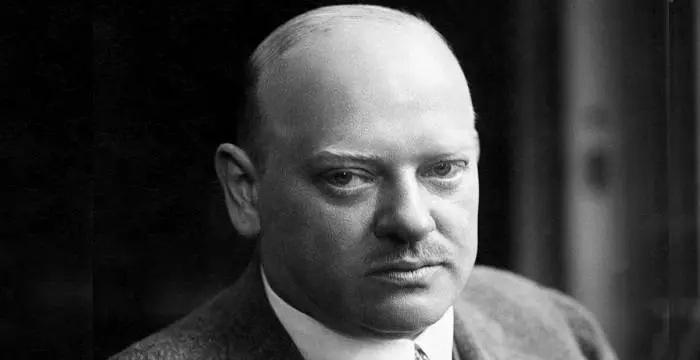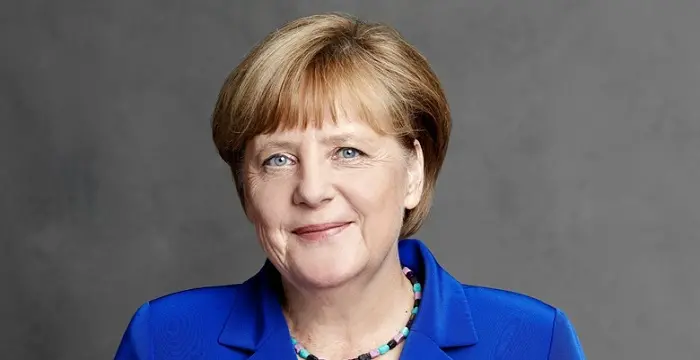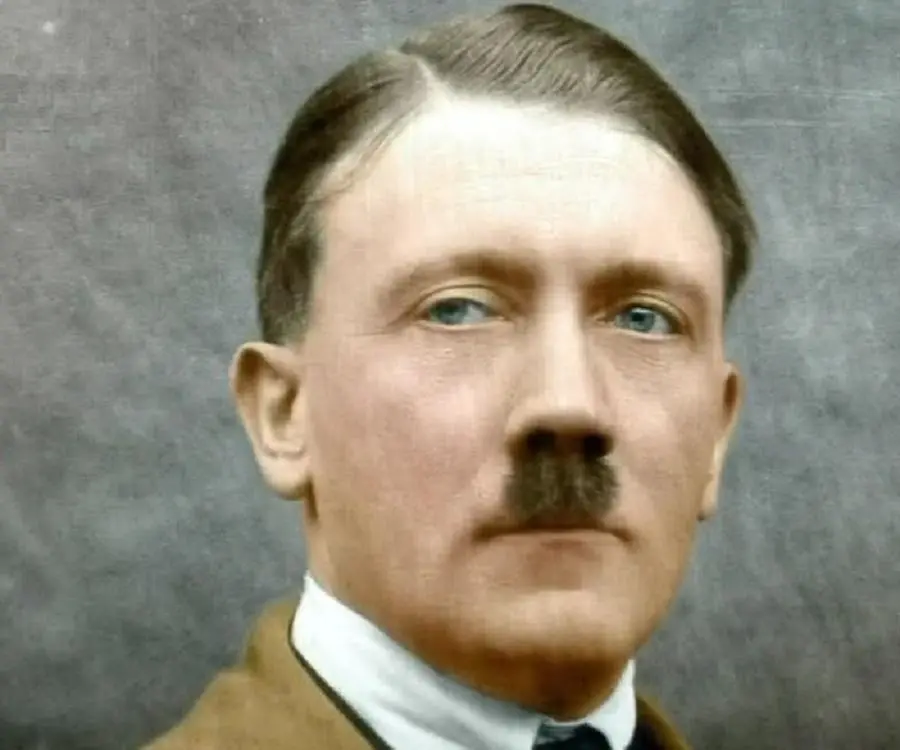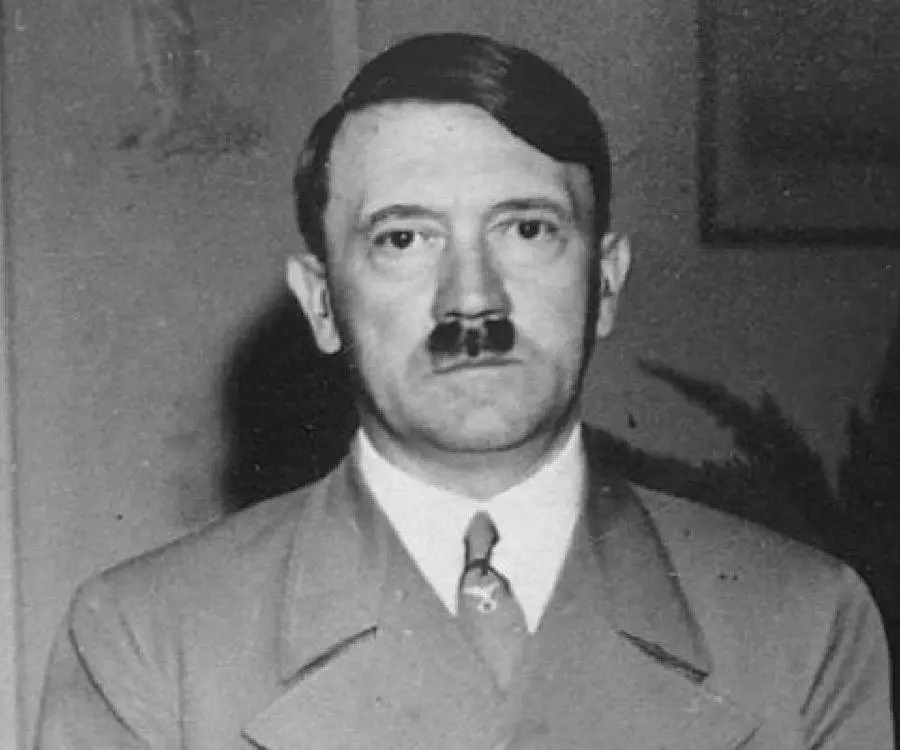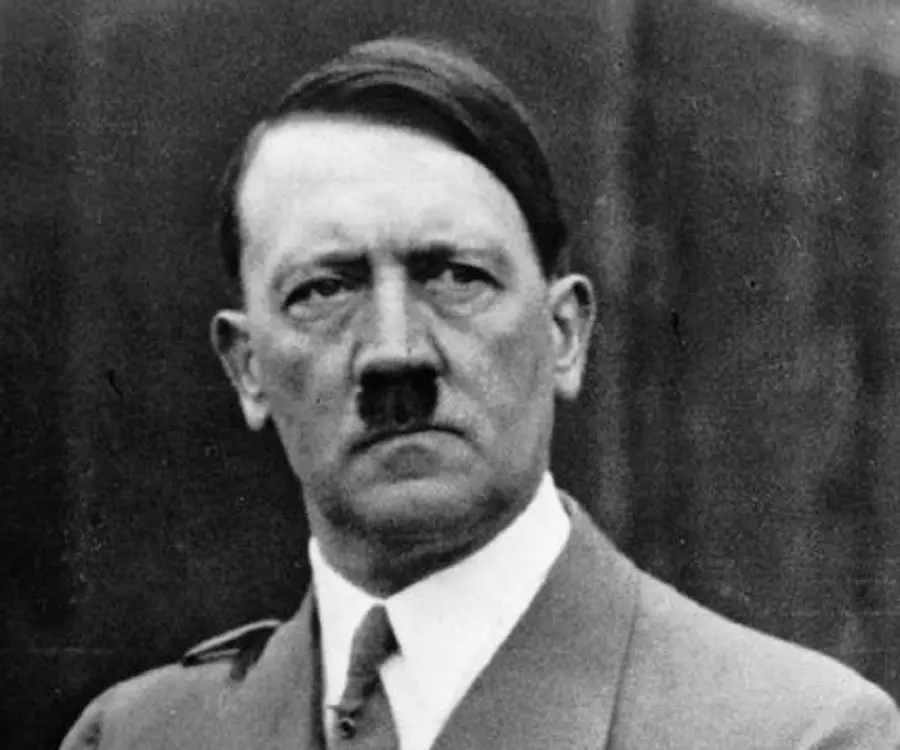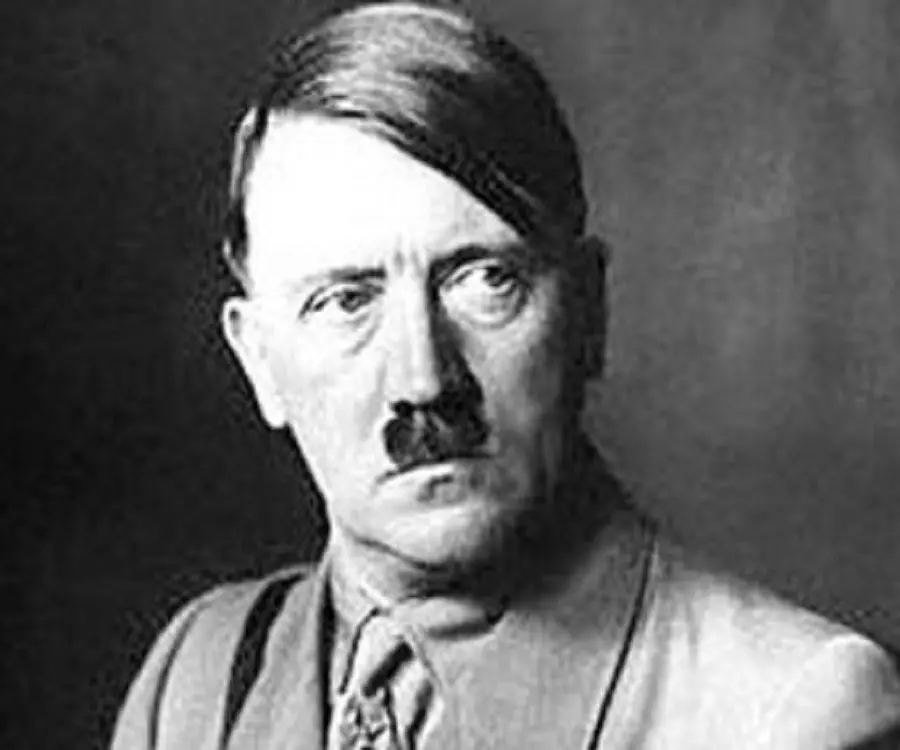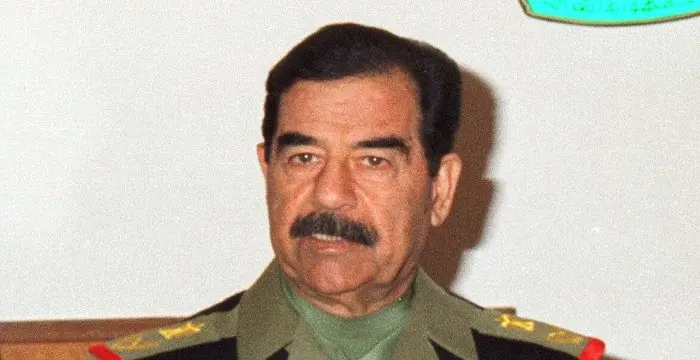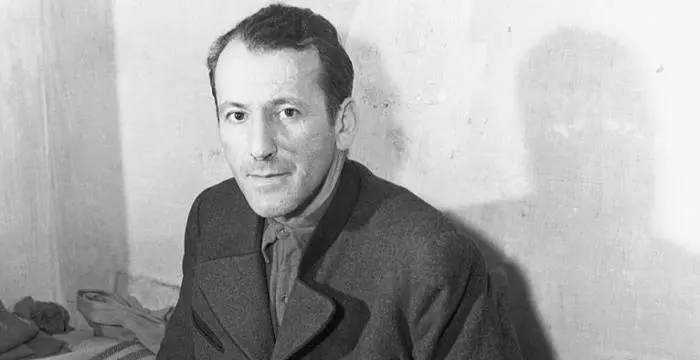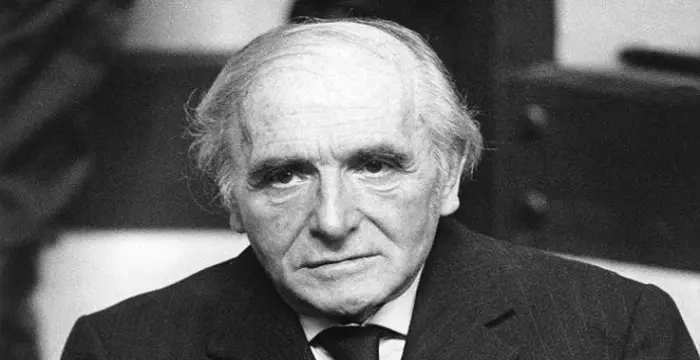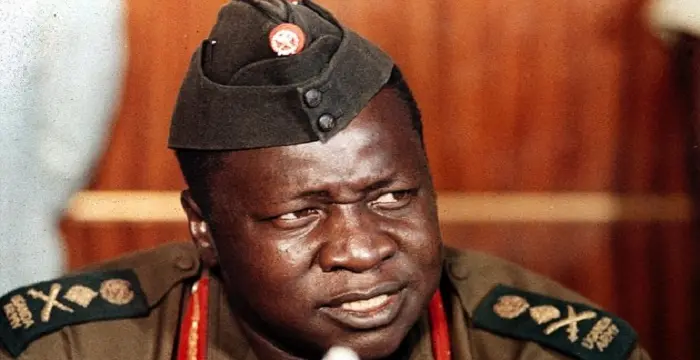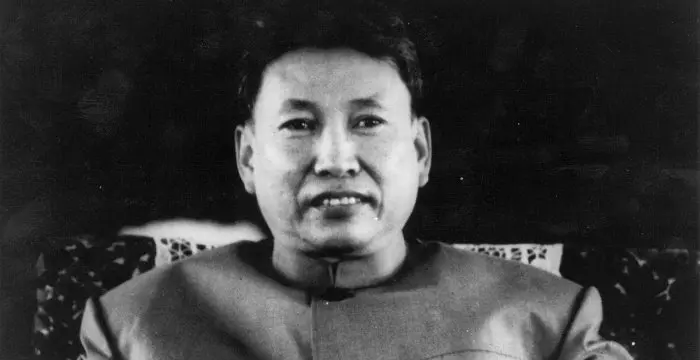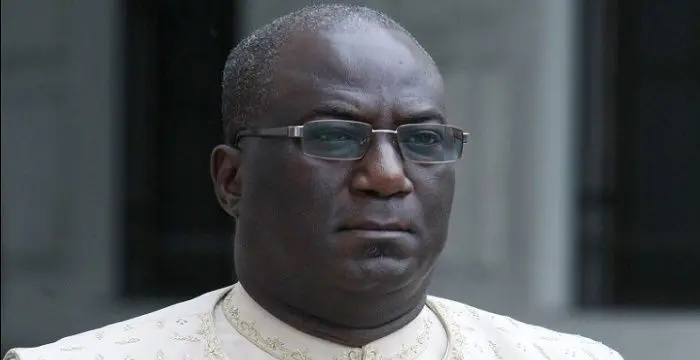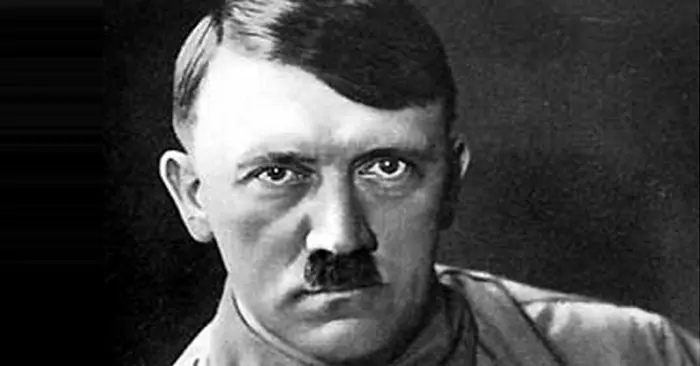
Adolf Hitler - Chancellor of Germany, Family and Family
Adolf Hitler's Personal Details
Adolf Hitler was the infamous dictator of Germany who carried out the genocide of Jews and was majorly responsible for the World War II
| Information | Detail |
|---|---|
| Birthday | April 20, 1889 |
| Died on | April 30, 1945 |
| Nationality | German |
| Famous | Leaders, Political Leaders, Presidents, Military Leaders, Dictators, INFJ, Chancellor of Germany, Dictators, Nazi Leader |
| Spouses | Eva Braun |
| Siblings | Gustav, Ida |
| Birth Place | Braunau am Inn |
| Political Ideology | National Socialist German Workers' Party (1921–1945) |
| Gender | Male |
| Father | Alois Hitler |
| Mother | Klara Hitler |
| Sun Sign | Aries |
| Born in | Braunau am Inn |
| Famous as | Nazi Leader, German Dictator and Chancellor of Germany |
| Died at Age | 56 |
// Famous Chancellor of Germany
Gustav Stresemann
Gustav Stresemann was a German politician and statesman who served as Chancellor and Foreign Minister during the Weimar Republic. This biography profiles his childhood, life, political career, achievements and timeline.
Angela Merkel
Angela Merkel is a German politician who has been the Chancellor of Germany since 2005. This biography of Angela Merkel provides detailed information about her childhood, life, achievements, works & timeline
Adolf Hitler's photo
Who is Adolf Hitler?
‘Germany will either be a world power or will not be at all’, said the head of the Nazi Party and the Supreme Commander of the Armed Forces, Adolf Hitler. He was the Chancellor of Germany during the Third Reich and the chief mastermind behind World War II. Known to the world as the indomitable ‘Fuhrer’, he was responsible for the mass and systematic extermination of millions of Jews and non-Aryans, whom he deemed unfit or inferior to the ideal ‘Aryan’ race. The founder of Nazism and a staunch anti-Semite, he made efforts to build a territorially larger and purer nation for German folk through his megalomaniac ways which prompted and also ended the World War, leading his country to abyss. He was also a prolific writer, artist and a militarist, known for his exceptional leadership talents and his effervescent nature. This German leader rose to prominence from the rank of a mere soldier owing to his exceptional oratory skills and went on to become one of the most feared despots of his time. His dream to establish ‘New Order’ in Germany was a culmination of his long and tyrannical, yet fascinating dictatorship. He transformed the face of the-then Weimar Republic into a single-party autocracy, based on the dictatorial ideology of a total ‘Nazi German’ hegemony. Hitler’s early years with the Nazi Party and his aggressive foreign policies were considered one of the main factors for the outbreak of World War II, which ultimately led to his downfall and a mass destruction around Central and Eastern Europe.
// Famous Dictators
Saddam Hussein
Saddam Hussein was the fifth President of Iraq whose regime lasted for nearly two and a half decades. This biography profiles his childhood, life, political career, events, trivia and timeline.
Childhood & Early Life
Adolf Hitler was born in Braunau am Inn, Austria, to Alois Hitler and Klara Polzl. He was the fourth of the six children born to the couple and was only 3-years-old when the family moved from Austria to Germany.
He was a very bright child and was very popular at school, but often clashed with his father over his interest in fine arts. This led to Hitler’s detachment from his family and he became a reclusive, discontented, resentful child, with an unstable temperament towards his father.
He was deeply attached to his lenient, hard-working mother, whose battle against cancer and consequent demise in December 1908 was a shattering blow to his already upset life.
It is believed that young Hitler showed an early interest in German nationalism, condemning the authority of Austro-Hungary. This nationalism would later play a major role in Hitler’s policy formations.
Vienna & Early Anti-Semitic Views
After spending four years in Linz, a Jewish colony, he dropped out of school at the age of 16, and moved to Vienna with dreams of becoming a painter. He applied to the Viennese Academy of Fine Arts twice and his rejection both times shaped his pathological hatred of Marxists and the cosmopolitan Habsburg monarchy.
He was homeless for some years and sold his artworks to earn a little wherewithal for sustenance. The prevalent racial and religious prejudice in Vienna at the time is said to have sown the seeds of anti-Semitism in him.
Later, hawking sketches in low taverns, he lived from hand-to-mouth and compensated for the frustrations of a solitary bachelor’s life in despondent shelters and cheap cafes, listening to others discussing grandiose dreams of a greater Germany.
It was during his years in Vienna that he was able to discern the ‘Eternal Jew’ symbol and started believing that Jews were the root cause of all chaos, corruption and obliteration in ethos, politics and economy.
Role In World War I
In May 1913, Hitler left Vienna for Munich and joined the 16th Bavarian Infantry Regiment when war broke out in August 1914, serving as a dispatch runner. He proved to be a courageous, able soldier and was awarded his first Iron Cross for bravery.
Twice injured, he landed up in a hospital in Pomerania, temporarily blinded and was driven to powerless rage owing to the 1918 German Revolution as well as the country’s military defeat during World War I.
After recovery, he was convinced that fate had picked him to rescue a disgraced nation from the manacles of the punitive Treaty of Versailles, which he condemned.
In the summer of 1919, Hitler observed the uprising of a small yet powerful group, known as the German Workers’ Party. On September 16, 1919, he entered the same party and soon changed its name to the Nationalist Socialist German Workers’ Party. By July 1921, he had imposed himself as the party’s Chairman.
Rise To Prominence & The Nazi Party
Hitler’s powerful oratory talent was discovered and he was made the chief speaker of the Nationalist Socialist German Workers’ Party. He also gave the group its new symbol—the ‘swastika’, a Hindu symbol for prosperity. His fervent conviction, boisterousness and theatrical quality of speeches, established him as the ‘Fuhrer’ (leader in German) of the movement, with over 3,000 members in the party as compared to the initial membership of 40.
He decided to organize his party on the basis of powerful squads such as the storm-troopers called, the ‘Sturmabteilung’ (SA) and Hitler’s black-shirted bodyguards, the ‘Schutzstaffel’ (SS).
He focused his propaganda against the ‘November Rogues’, the people he considered as ‘internal enemies’, who signed the Treaty of Versailles and who, according to him, were responsible for all of Germany’s domestic problems. His views of the Versailles Treaty gave birth to socialistic ideas of the ‘Aryan’ race supremacy and extreme-nationalist policies.
By 1923, the Weimar Republic was on the verge of collapse and Hitler sought to overthrow the Bavarian government in Munich, by bursting into a beer hall in the city. This eventually grew to become the infamous, ‘Beer Hall Putsch’, where 3,000 of Hitler’s men attempted to ‘putsch’ (or overthrow) the existing Munich government.
He was arrested and tried on February 26, 1924 and was sentenced to five years of prison. However, he was released after nine months of prison term and dedicated his only major work, ‘Mein Kampf’, to his loyalist, Rudolf Hess.
The failure of the Putsch, the ban on the Nazi Party and his jail term, made Hitler stronger and he vowed to come back with the army and the police under his command.
In 1925, the ban on the Nazi Party was lifted and Hitler regained permission to speak in public and established himself as the ultimate arbitrator.
In the 1928 elections, owing to the onset of the Great Depression and the consequent threat to the German economy, people chose not to vote for Hitler’s Nazi Party and he won a mere 12 seats.
Despite this defeat, the Nazis began to win over large industrial and army circles and with the backing of the press, Adolf Hitler received tremendous nationwide exposure. Cunning as he was, he played on the national sentiment of revolt and of a desire for strong leadership, using all the modern techniques of mass persuasion. He thus, presented himself as Germany’s sole knight in shining armor.
Consequently, in the 1930 elections, the Nazis won majority votes, winning a whopping 107 seats at the Reichstag. The same year, he officially acquired German citizenship and ran for presidency on April 10, 1931, but was defeated by von Hindenburg.
In 1932, after the Nazis emerged as the largest political party in Germany with nearly fourteen million votes to their credit, he was appointed as Chancellor of Germany on January 30, 1933.
Once in the saddle, Hitler moved swiftly, wiping out rivals, ousting free trade unions and the Jews from any role whatsoever in the political and social workings of the country. He even won a majority at the last ‘democratic’ elections in Germany on March 5, 1933 with the help of nationalists and a generous use of intimidation, terror and persuasion.
Hitler was considered the undisputed dictator of the Third Reich and by the beginning of August 1934, and after the death of von Hindenburg, he had all the powers of the state in his hands.
In the next four years, he enjoyed a dazzling string of domestic and international successes, outwitting rival political leaders abroad just as he had defeated his opposition at home.
In 1935, he abandoned the Treaty of Versailles and began building his army by recruiting five times its permitted number. He built the ‘Luftwaffe’ and supplied military aid to forces in Spain, which brought about the Spanish victory in 1939.
The German armament program led to full employment in Germany and an uninhibited expansion of military production. This, reinforced by his foreign policy successes like the ‘Rome-Berlin’ pact of 1936, the ‘Anschluss’ with Austria and the liberation of the ‘Sudetan’ Germans, brought Hitler to the apex of his popularity.
Hitler’s tactics bludgeoned the British and the French into the humiliating Munich Agreement of 1938 and the dismantlement of the Czechoslovakian state in 1939.
The next designated target for Hitler was Poland, an ally of Britain and France. In order to deal with a possible two-front war, the Nazi dictator signed a friendship and non-aggression pact with Soviet Russia; this he later breached.
World War II & War Crimes
On September 1, 1939, German forces invaded Poland while their leader tried to secure ‘Lebensraum’, or Germany’s ‘free living space’, by driving out the Polish from their lands.
The first phase of World War II was dominated by German ‘Blitzkrieg’ tactics which involved sudden attacks on airfields or other military installations, using fast mobile armor and state-of-the-art bomber aircrafts. Poland was overrun in less than a month and Holland, Belgium and France were taken down in six weeks thereafter.
The fall of France left Britain helpless, but the British refused to bow down. The Battle of Britain, where the RAF prevented the Luftwaffe from gaining control over British skies, was Hitler’s first setback. He retreated and decided to postpone his British attack for later and joined his Italian allies who were fighting in North Africa. He annexed parts of Greece, Yugoslavia and the island of Crete, with the help of the Italians.
Although he had signed a non-aggression pact with Soviet Russia, he invaded its territories nonetheless on June 22, 1941, thinking that USSR’s destruction would leave Britain without any potential support.
With the inclusion of America in the World War by the end of 1941, Britain refused to accept Germany’s right over continental Europe. This led to the implementation of Hitler’s ‘Final Solution of the Jewish Question’, which was under deliberation since 1939.
The ‘Final Solution of the Jewish Question’ according to Hitler, was a complete extermination of the Jewish race. The execution of this plan was expedited due to British insubordination despite his explicit threat that any insubordination would spell doom for the Jewish community across the world.
‘Jew-eradication’ measures were already taken in areas of Poland and Germany, where the Jews were sent to concentration camps and exterminated in masses. He also targeted Russian soldiers in an attempt to annihilate ‘Bolshevism’ from its roots.
Over 100 camps were set up in Germany and a 100 more outside the country. What followed was a series of gruesome events where thousands of Jews and others ‘unsuited’ for the Aryan race, were herded together and systematically killed. The grotesque killing methods included starvation, shooting and even, lethal gas chambers disguised as shower chambers.
1941 onwards, Jews were even gassed in trucks and killed by firing squads. Many large concentration camps like ‘Majdanek’ and ‘Auschwitz’ became highly infamous and accounted for more than 1,00,000 victims per day.
Within a couple of months, Hitler extended his armies across the Baltic and the Black Sea, but the Soviet Union did not collapse like Hitler had expected. Instead of trying to seize the heart of Moscow, he ordered a pincer movement around Kiev to seize Ukraine and proclaimed on October 1941, that the Soviet Union had fallen due to the merciless Russian winter.
The failure of the Italians in the Middle East and the entry of the United States in the War were visible signs of the coming German defeat, which became apparent in 1942. However, Hitler was convinced that it was his military and general staff that was weak and indecisive and he became more prone to hysterical fury and brooding. His health too, began to decline at this point of time.
Fall Of The Third Reich
By the beginning of 1943, the Third Reich lacked the resources to fight off impending doom. All that remained of Hitler’s Reich, was the mass Nazi responsibility to exhume the dead from concentration camps, burn their bodies, destroy all evidence of crime and plow concentration camps under.
Hitler’s generals grew increasingly frustrated by his refusal to trust them in their respective fields and recognizing the inevitability of their defeat, they planned a small anti-Nazi Resistance to assassinate the Fuhrer on July 20, 1944. The plot failed and Hitler ruthlessly assassinated all the conspirators.
The gassing of the Jews, Poles and Soviets continued till November 1944, along with numerous brutal medical experiments conducted on Jews in camps.
Towards the end of the war and his life, Hitler grew cynical and indulged in endless, night-long monologues, gesturing over maps and suggesting that his secret V-1 and V-2 rockets may turn the war for Germany.
As the Soviets approached Berlin and the Anglo-Americans, along with the Allies, closed in on Hitler’s Germany, the Fuhrer ordered the destruction of various industries, transport systems and communications, believing that if he did not survive, Germany too should be destroyed.
The same ruthless nihilism and passion for destruction which led to the death of over six million Jews in death camps for the so-called ‘biological cleansing’, finally turned on his own people. The Third Reich was doomed.
Personal Life & Legacy
Researches and studies have suggested that Hitler suffered from a number of health problems, such as skin lesions, coronary sclerosis, Parkinson’s disease, syphilis and irritable bowel syndrome.
He met Eva Braun, his long-term mistress, in 1929, and married her on April 29, 1945. It is also rumored that he had an affair with his half-niece, Geli Raubal, who committed suicide in her apartment in 1931, under mysterious circumstances.
He was addicted to amphetamine after 1937 and became a regular user of the drug in the fall of 1942.
As a result of the assassination attempt in 1944, he suffered ruptured eardrums and over 200 wooden splinters had to be removed from his leg.
On April 30, 1945, he committed suicide, shooting his wife and himself in the mouth with a pistol. Their bodies were carried to the gardens of the Reich Chancellery, doused with petrol and burned.
This final, grisly act of self-destruction fittingly symbolized the career of a political leader whose main legacy to Europe was the ruin of its civilization and the futile sacrifice of precious human life for the sake of ‘race’ and power. Berlin fell on May 2, 1945 and so did Hitler’s twelve years of tyrannical, totalitarian rule.
Almost immediately after the death of Hitler, the Nazi ideology was universally regarded as diabolical and he came to be known as the ‘main author of the war leaving over 50 million dead and millions more homeless and grieving’.
Many of his generals were convicted of war crimes and crimes against humanity and were tried at court, some of whom were even put to death. The fall of Hitler’s Germany led to the onset of the Cold War between the Soviet Union and the United States.
Trivia
This European Dictator loved the circus, because he took pleasure in the idea that underpaid performers risked their lives to please him. He even personally remembered each of the performers’ names.
This infamous European leader was a vegetarian, hated smoking and drinking and loved dogs immensely.
This Nazi German was fascinated by hands. His library contained a number of sketches of hands belonging to famous people throughout history.
Top 10 Facts You Did Not Know About Adolf Hitler
Hitler is synonymous with his moustache but few people know that his preferred style was that of handlebar variety. During World War I, he was ordered to trim his moustache so that it would fit underneath gas masks.
He loved animals and upon coming to power in January 1933, proclaimed that “In the new Reich, no more animal cruelty will be allowed”.
In 1937, Swiss psychiatrist and psychotherapist Carl Jung analyzed Hitler’s handwriting and wrote that it included “typical characteristics of a man with essentially feminine instinct”.
Adolf Hitler was nominated for the Nobel Peace Prize in 1939! However, he withdrew his nomination on February 1, 1939 and his name never appeared in a shortlist.
He was staunchly opposed to smoking and launched what was probably the first anti-smoking mass movement in the world during the 1930s and early 1940s.
Hitler never visited a single concentration camp.
It was reported that he had only one testicle.
He regarded Henry Ford as his inspiration and kept Ford’s portrait behind his desk.
Hitler was so paranoid that he employed food tasters in order to avoid an assassination attempt by poisoning.
During the World War II, when Paris fell to German forces, the French Resistance cut the elevator cables to the Eiffel Tower, in order to prevent Hitler from visiting it. Faced with the daunting prospect of climbing over 1500 stairs, Hitler opted out.
// Famous Nazi Leader
Ernst Kaltenbrunner
Ernst Kaltenbrunner was an Austrian Nazi Party leader during World War II. Check out this biography to know about his childhood, life, achievements and other facts about him.
Klaus Barbie
Klaus Barbie was a Nazi leader infamous for his crimes against French prisoners during World War II. Check out this biography to know about his childhood, family life, achievements and other facts about his life.
Hermann Fegelein
Hermann Fegelein was a high-ranking Waffen-SS commander in Nazi-ruled Germany. Check out this biography to know about his childhood, family life, crimes and other facts about him.
Adolf Hitler biography timelines
- // 20th Apr 1889Adolf Hitler was born in Braunau am Inn, Austria, to Alois Hitler and Klara Polzl. He was the fourth of the six children born to the couple and was only 3-years-old when the family moved from Austria to Germany.
- // Dec 1908He was deeply attached to his lenient, hard-working mother, whose battle against cancer and consequent demise in December 1908 was a shattering blow to his already upset life.
- // May 1913In May 1913, Hitler left Vienna for Munich and joined the 16th Bavarian Infantry Regiment when war broke out in August 1914, serving as a dispatch runner. He proved to be a courageous, able soldier and was awarded his first Iron Cross for bravery.
- // 1918Twice injured, he landed up in a hospital in Pomerania, temporarily blinded and was driven to powerless rage owing to the 1918 German Revolution as well as the country’s military defeat during World War I.
- // 1919In the summer of 1919, Hitler observed the uprising of a small yet powerful group, known as the German Workers’ Party. On September 16, 1919, he entered the same party and soon changed its name to the Nationalist Socialist German Workers’ Party. By July 1921, he had imposed himself as the party’s Chairman.
- // 1923By 1923, the Weimar Republic was on the verge of collapse and Hitler sought to overthrow the Bavarian government in Munich, by bursting into a beer hall in the city. This eventually grew to become the infamous, ‘Beer Hall Putsch’, where 3,000 of Hitler’s men attempted to ‘putsch’ (or overthrow) the existing Munich government.
- // 1924He was arrested and tried on February 26, 1924 and was sentenced to five years of prison. However, he was released after nine months of prison term and dedicated his only major work, ‘Mein Kampf’, to his loyalist, Rudolf Hess.
- // 1925In 1925, the ban on the Nazi Party was lifted and Hitler regained permission to speak in public and established himself as the ultimate arbitrator.
- // 1928In the 1928 elections, owing to the onset of the Great Depression and the consequent threat to the German economy, people chose not to vote for Hitler’s Nazi Party and he won a mere 12 seats.
- // 1930Consequently, in the 1930 elections, the Nazis won majority votes, winning a whopping 107 seats at the Reichstag. The same year, he officially acquired German citizenship and ran for presidency on April 10, 1931, but was defeated by von Hindenburg.
- // 30th Jan 1933In 1932, after the Nazis emerged as the largest political party in Germany with nearly fourteen million votes to their credit, he was appointed as Chancellor of Germany on January 30, 1933.
- // Aug 1934Hitler was considered the undisputed dictator of the Third Reich and by the beginning of August 1934, and after the death of von Hindenburg, he had all the powers of the state in his hands.
- // 1935In 1935, he abandoned the Treaty of Versailles and began building his army by recruiting five times its permitted number. He built the ‘Luftwaffe’ and supplied military aid to forces in Spain, which brought about the Spanish victory in 1939.
- // 1st Sep 1939On September 1, 1939, German forces invaded Poland while their leader tried to secure ‘Lebensraum’, or Germany’s ‘free living space’, by driving out the Polish from their lands.
- // 22nd Jun 1941Although he had signed a non-aggression pact with Soviet Russia, he invaded its territories nonetheless on June 22, 1941, thinking that USSR’s destruction would leave Britain without any potential support.
- // 1942The failure of the Italians in the Middle East and the entry of the United States in the War were visible signs of the coming German defeat, which became apparent in 1942. However, Hitler was convinced that it was his military and general staff that was weak and indecisive and he became more prone to hysterical fury and brooding. His health too, began to decline at this point of time.
- // 1943By the beginning of 1943, the Third Reich lacked the resources to fight off impending doom. All that remained of Hitler’s Reich, was the mass Nazi responsibility to exhume the dead from concentration camps, burn their bodies, destroy all evidence of crime and plow concentration camps under.
- // 20th Jul 1944Hitler’s generals grew increasingly frustrated by his refusal to trust them in their respective fields and recognizing the inevitability of their defeat, they planned a small anti-Nazi Resistance to assassinate the Fuhrer on July 20, 1944. The plot failed and Hitler ruthlessly assassinated all the conspirators.
- // Nov 1944The gassing of the Jews, Poles and Soviets continued till November 1944, along with numerous brutal medical experiments conducted on Jews in camps.
- // 29th Apr 1945He met Eva Braun, his long-term mistress, in 1929, and married her on April 29, 1945. It is also rumored that he had an affair with his half-niece, Geli Raubal, who committed suicide in her apartment in 1931, under mysterious circumstances.
- // 30th Apr 1945On April 30, 1945, he committed suicide, shooting his wife and himself in the mouth with a pistol. Their bodies were carried to the gardens of the Reich Chancellery, doused with petrol and burned.
// Famous Dictators
Idi Amin
A Ugandan dictator, Idi Amin is remembered for his brutal regime and crime against humanity. Check this biography to know in details about his life, childhood, profile and timeline.
Pol Pot
Pol Pot was the Cambodian revolutionary who led the Khmer Rouge. This biography provides a glimpse of his childhood, career, profile and timeline.
Siaka Stevens
Siaka Stevens was the third Prime Minister of Sierra Leone who later became the first President of the country. This biography of Siaka Stevens provides detailed information about his childhood, life, achievements, works & timeline.
Juan Manuel de Rosas
Juan Manuel José Domingo Ortiz de Rosas was an Argentinean dictator. Check out this biography to know about his childhood, life, achievements, works & timeline.
Manuel Noriega
Manuel Noriega was a Panamanian dictator, who ruled Panama as military dictator from 1983 to 1989. This biography profiles his childhood, life, military career, achievements and timeline
Saddam Hussein
Saddam Hussein was the fifth President of Iraq whose regime lasted for nearly two and a half decades. This biography profiles his childhood, life, political career, events, trivia and timeline.
Adolf Hitler's FAQ
What is Adolf Hitler birthday?
Adolf Hitler was born at 1889-04-20
When was Adolf Hitler died?
Adolf Hitler was died at 1945-04-30
Where was Adolf Hitler died?
Adolf Hitler was died in Berlin
Which age was Adolf Hitler died?
Adolf Hitler was died at age 56
Where is Adolf Hitler's birth place?
Adolf Hitler was born in Braunau am Inn
What is Adolf Hitler nationalities?
Adolf Hitler's nationalities is German
Who is Adolf Hitler spouses?
Adolf Hitler's spouses is Eva Braun
Who is Adolf Hitler siblings?
Adolf Hitler's siblings is Gustav, Ida
What is Adolf Hitler's political ideology?
Adolf Hitler's political ideology is National Socialist German Workers' Party (1921–1945)
Who is Adolf Hitler's father?
Adolf Hitler's father is Alois Hitler
Who is Adolf Hitler's mother?
Adolf Hitler's mother is Klara Hitler
What is Adolf Hitler's sun sign?
Adolf Hitler is Aries
How famous is Adolf Hitler?
Adolf Hitler is famouse as Nazi Leader, German Dictator and Chancellor of Germany
